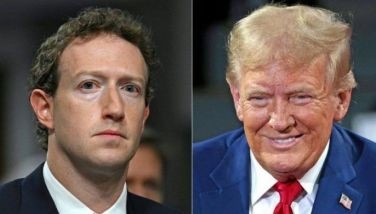WEF delegates push for greater accessibility to financial services
MANILA, Philippines - The government and the private sector should not hesitate to use different business models in their pursuit for greater accessibility to financial services, delegates at the Financial Inclusion Session at the World Economic Forum said.
“With the number of people you want to reach out to, there’s a room for every model as long as it’s sustainable,†Jose Isidro Camacho, vice-charman for Asia-Pacific and country chief executive officer at Credit Suisse (Singapore), said.
Financial inclusion has been the advocacy of the Bangko Sentral ng Pilipinas to allow a bigger part of the population to have access to formal financial services.
Camacho said that his firm, being a global financial institution, pursues financial inclusion through capacity building with other organizations and helping microfinance companies in ways the firm can.
“We do have a program that allow us to deploy young bankers globally… and work with microfinance institutions and help them with risk-finance management and other functions,†Camacho said.
Matthew Driver, president for southeast Asia at MasterCard (Singapore), said during the session that ecosystems built to further promote financial inclusion should really be sustainable.
“Governments can lead but you have to build sustainable ecosystems,†Driver said.
MasterCard, he said, has been working with mobile operators in the region in order to expand their reach especially as a big chunk of the population have mobile phones.
“We’re trying to leverage the experience we have on the ground and improve it with technology,†Driver said.
For Chetna Vijay Sinha, founder of the Mann Deshi Mahila Sahakari Bank in India, the governments that provide subsidies to push for financial inclusion need to focus on the people wanting to grow their wealth.
“Governments, they look at financial inclusion as [the number of people] opening bank accounts. So for example, they let these people open bank accounts but found after some time these are zero-balance accounts, this means you are going to clients who are not doing banking,†Sinha said.
“You should take clients who really want to create wealth… Why is cellphone [penetration] in India more than 80 percent of households? It’s because it’s helping them in so many ways so banking has to be same,†she continued.
Another problem with governments and some businesses, Sinha said, is that there is a general notion that the poor don’t have surplus funds so they won’t be able to save.
But the entrepreneur stressed there has been no proven correlation between being poor and the want to save.
“Even the poor people want to save for the education of their children, to repair their house, and so on. Poor people clearly want… to plan their lives… and saving for them is much more important,†she pointed out.
Camacho also mentioned during the session that he has been working on a “personal project†assessing a microfinance business in Indonesia, BTPN, and is thinking of bringing it to the Philippines.
“The branches will be like barangay centres, because say, you’re a market vendor and you’re going to a bank office and you have no education, you don’t know how to speak English, and you only have one ID, it’s intimidating,†Camacho shared.
These branches are eyed to be set up not just in rural areas but in locations where there the target market is, he said, noting this could be situated near public markets or where tricycle drivers and jeepney drivers hang out.
- Latest
- Trending






























